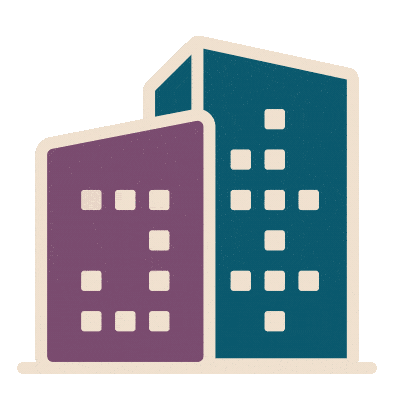Pioneering Research on Sleep at Well Living Lab China
Wellness Smart Sleep System for Better Relax and Restoration
In a world turned upside down by the global pandemic and social injustice, organizations everywhere have been forced to reexamine their values, revisit their practices and rise to the challenge of radical transformation. Sleep problems are a major problem that plague people’s health both in China and the world, and the decline in sleep quality will seriously affect people’s health and quality of life. For employees, their sleep quality is affected due to the pressure of work and life, and not getting a good night’s rest means that the energy, mood and performance of the next working day will deteriorate and enter a vicious cycle. Therefore, Well Living Lab China is now focusing on how to promote people’s sleep health through health strategies.
The study[1] demonstrates that “simulating the sun setting while sleeping by dimming the lighting gradually and lowering the color temperature can contribute to melatonin secretion, sleep aid and normalization of circadian rhythm. Similarly, the bedroom illumination should increase stage by stage when getting up. Following this changing rhythm, human cardiovascular function and circadian rhythms can be normalized[2], while the midway arousal and neuropsychiatric disorders can be suppressed[3]. In terms of the sleep thermal environment, the studies show that the indoor temperature should be adjusted during the sleep[4] based on human individual parameters, including BMI, personal bedding, outdoor temperature and personal temperature preferences[5][6].
The control strategies of this “Wellness Smart Sleep System” were deigned based on dozens of relevant literature and existing research.
Well Living Lab China research team has conducted a special experimental study on the effectiveness of this system for sleep improvement in Beijing, and seven subjects were involved in this research study. Global Sleep Disorders Scale and Sleep Diary were used for measuring subjective feelings during & after sleep. ECG device was used for measuring LH/HF, SDNN, LF, HF, PNN20%, PNN50%, VLF, etc., and Actigraphy was used for recording body movement during sleep, sleep time, wake time, sleep latency, total sleep time, wake time after falling asleep, sleep efficiency.
During the nighttime sleep experiment, the physiological parameters (sleep period, sleep depth, heart rate, respiration rate, body movement) of the subjects are monitored during sleep through sensors placed on the bed, and sleep scores which reflect the sleep quality will be obtained and judge whether the parameters of the next sleep scene need to be improved. If the system determines that the sleeping environment needs to be improved, the temperature and humidity of the sleeping environment and the duration of the lighting change on the next day will be adjusted according to the wake-up questionnaire feedback. The results show that compared with the traditional manual control of air conditioning and lighting, around 85% subjects have higher SDNN value, which means better autonomic nervous system regulation during sleep.
Based on the above experimental verification, we believe the use of Wellness Smart Sleep System has a positive effect on the quality of human sleep. To some extent, this system can replace manual control of the sleep environment for better relax and restoration. Therefore, we hope this sleep system can help more people relax at night, improve the working status of the next day, and enable people to obtain health and well-being.
Also, we hope it can help more organizations or projects as successful as possible for their WELL milestones through the strategy implementation, as this solution has been recognized by IWBI as an Innovation feature, which encourages projects to propose new interventions to solve health and well-being problems in innovative ways. Currently, the Wellness Smart Sleep System has been put into practical use and fully configured in the houses and apartments of Panasonic Wellness Smart Town in Yixing, Jiangsu Province, China, which received WELL WPR in January 2023.
References:
[1] Influence of Light at Night on Melatonin Suppression in Children Shigekazu Higuchi, Yuki Nagafuchi, Sang-il Lee, Tetsuo Harada
The Journal of Clinical Endocrinology & Metabolism, Volume 99, Issue 9, 1 September 2014, Pages 3298–3303
https://doi.org/10.1210/jc.2014-1629
[2] Effect of artificial dawn light on cardiovascular function, alertness, and balance in middle-aged and older adults
Virginie Gabel, Mitchell Miglis, Jamie M Zeitzer Jamie M Zeitzer Sleep, Volume 43, Issue 10, October 2020, zsaa082
https://doi.org/10.1093/sleep/zsaa082
[3] Adherence and acceptability of light therapies to improve sleep in intrinsic circadian rhythm sleep disorders and neuropsychiatric illness: a systematic review Sleep Health, Volume 6, Issue 5, October 2020, Pages 690-701
Sophie M. Faulkner BA, Bsc, MRes a, b, Derk-Jan Dijk PhD, FRSB, FMedSci c, d, Richard J. Drake BSc, MBChB, MRCPsych, PhD a, b, Penny E. Bee PhD, BSc(Hons),GIBiol a
https://doi.org/10.1016/j.sleh.2020.01.014
[4] Investigation of sleep quality under different temperatures based on subjective and physiological measurements Li Pan, Zhiwei Lian, Li / Lan HVAC&R RESEARCH 18(5) DOI:10.1080/10789669.2012.667037
[5] 在sleeping environments中对治疗环境影响的研究——为sleeping environments开发治疗环境模型 Zhongping Lina, Shiming Dengb Building and Environment 43 (2008) 70–81
[6] Effects of Thermal Environment on Sleep Quality in the Bedroom(Part 5) Analysis of Sleep Quality Using HumanHeat Load Considering Individual BMR
ShunichiTAKEUCHI1RisaINOUE2YoshitoTAKAHASHI1Masayuki OGATA1Kazuyo TSUZUKI3Shin-ichi TANABE
空气调节·卫生工学会大会学术讲演论文集{2019.9.18~20 (札幌) }







